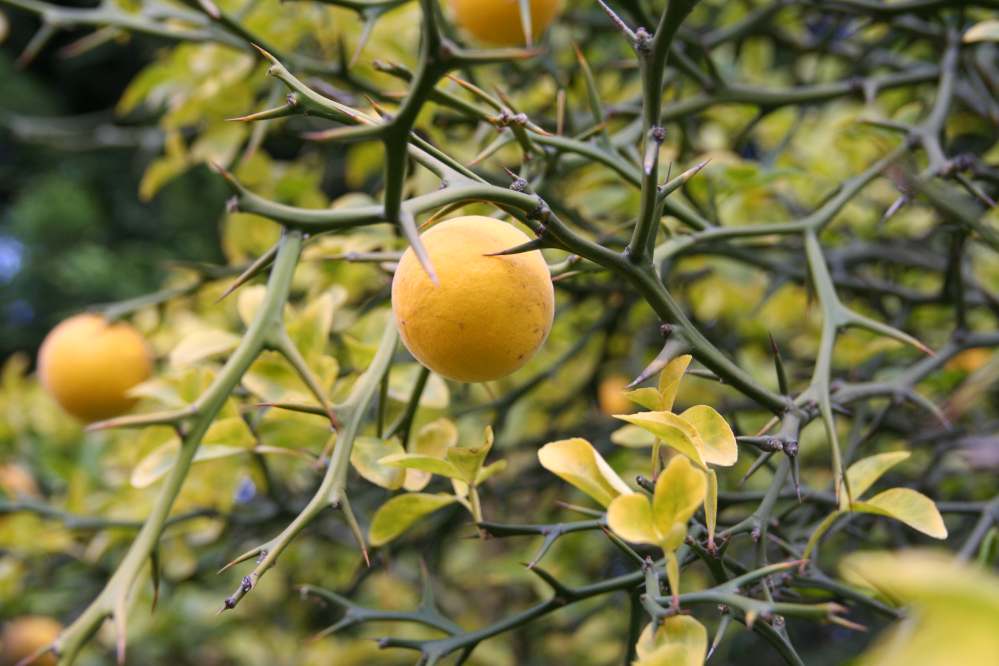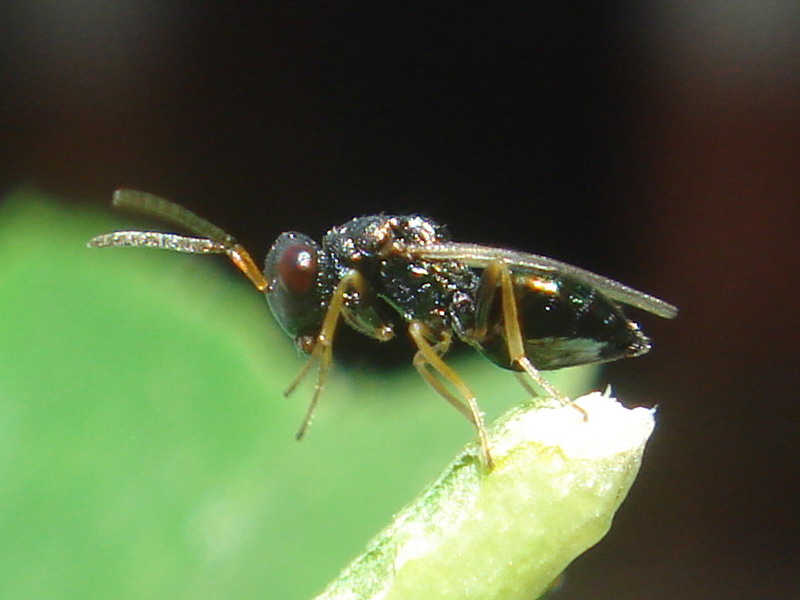Interactions
 Some
interactions the Papilio xuthus has with other species
is with its food source. The swallowtail butterfly feeds
on
plants from the Rutaceae family, an example of an organsim from
this family is the Citrus limon, you can click
here to read more about this organism. Most species of Papilio
use citrus as its host plants and the Papilio xuthus
feeds on Poncirus trifoliota also known as the
trifoliate orange (Miller et al. 2004). An organism related to
the trifoliate orange is the
Citrus sinensis. Other speicies of Papilio
(sometimes the xuthus) feed on plants from the
Umbelliferae (Scott 1986). Types of plants in this family are
the celeries, carrots, and parsleys. It is most common that the
larvae of these butterflys feed on this family of plants.
Some
interactions the Papilio xuthus has with other species
is with its food source. The swallowtail butterfly feeds
on
plants from the Rutaceae family, an example of an organsim from
this family is the Citrus limon, you can click
here to read more about this organism. Most species of Papilio
use citrus as its host plants and the Papilio xuthus
feeds on Poncirus trifoliota also known as the
trifoliate orange (Miller et al. 2004). An organism related to
the trifoliate orange is the
Citrus sinensis. Other speicies of Papilio
(sometimes the xuthus) feed on plants from the
Umbelliferae (Scott 1986). Types of plants in this family are
the celeries, carrots, and parsleys. It is most common that the
larvae of these butterflys feed on this family of plants.
An interesting interaction the Papilio
butterfly's larvae has is with birds and snakes. The larvae will
mimic these organisms as a defense system. The larvae sometimes
resemble bird droppings so they are not eaten by other
organisms. Sometimes these larvae also resemble small snakes.
The larvae will have an osmeterium, which is an organ on the
prothoracic part of the larvae, that lookes like an orange snake
tounge and eyes (Scott 1986). Some Papilio also look
like the butterfly Troidini so they have a less chance of being
eaten by birds. The Troidini butterflys are poisonous (Scott
1986). Birds know that the Troidini are dangerous to eat so they
stay away from them.
Another interesting
interaction the P.
xuthus
has is with the Pteromalus puparum also known as the
Pteromalid Wasp. These two species have a parasitic interaction
(Zhu et al. 2009). Researchers did experiments to determine how
the P. xuthus reacts to a parasitic attack of the
P. puparum at a molecular level. These wasps use other
organisms to lay their eggs and reproduce. The way this wasp does this is by injecting its host with a venom. This venom
inhibits the immune response of the host organism so it cannot
defend itself from a molecular level. The venom disrupts
metabolic activities and development leading to the host
organism’s death (Zhu et al. 2009). Researchers looked at how
the P. xuthus responds to this type of attack. It was
found that there was changes to 16 proteins in the P. xuthus.
Some of these changes were to proteins important in immune
response, cell structure, signal transduction, and
detoxification. Researchers used an SDS-PAGE to see what
proteins were expressed. They concluded that some of these
proteins were under-expressed which could mean the proteins were
not functioning properly. They also saw that some proteins were
not expressed at all which could mean the function was lost
completely (Zhu et al. 2009). Ultimately this change in protein
function leads to the death of the P. xuthus.
does this is by injecting its host with a venom. This venom
inhibits the immune response of the host organism so it cannot
defend itself from a molecular level. The venom disrupts
metabolic activities and development leading to the host
organism’s death (Zhu et al. 2009). Researchers looked at how
the P. xuthus responds to this type of attack. It was
found that there was changes to 16 proteins in the P. xuthus.
Some of these changes were to proteins important in immune
response, cell structure, signal transduction, and
detoxification. Researchers used an SDS-PAGE to see what
proteins were expressed. They concluded that some of these
proteins were under-expressed which could mean the proteins were
not functioning properly. They also saw that some proteins were
not expressed at all which could mean the function was lost
completely (Zhu et al. 2009). Ultimately this change in protein
function leads to the death of the P. xuthus.
The P. xuthus has many interactions with organisms
including its food source, parasitic interactions, and defense
system interactions. The P. xuthus not only use mimicry
as a defense system but it also uses chemicals. The next page
(facts) goes more in depth into what their chemical defense
system is.